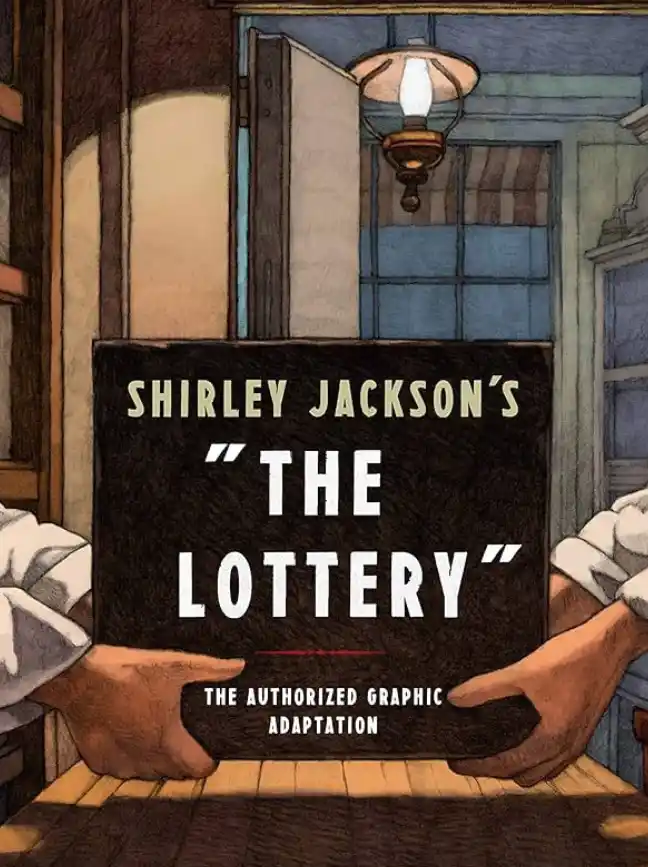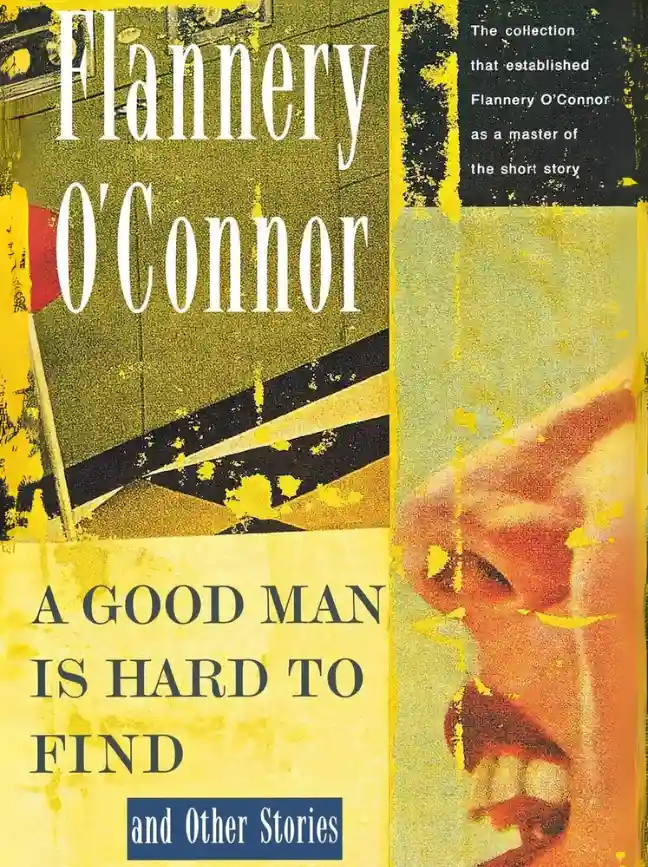IT’S BEEN ONE OF my life’s greatest pleasures to conceive and launch a new business venture. It’s exhilarating to dream, to plumb the depths of my own experiences and piece together things that excite me to create something that never existed before. But I will throw myself into a new venture only when certain criteria are met:
I am passionate about the subject matter (i.e., early American folk antiques, modern art, jazz, barbecue).
I know I will derive some combination of challenge, satisfaction, and pleasure from the venture.
It presents meaningful opportunities for professional growth for my colleagues and me. The new business will add something to the dialogue in a specific context, such as luxury dining (Gramercy Tavern), museum dining (The Modern, Cafe 2, and Terrace 5 at the Museum of Modern Art), Indian dining (Tabla), barbecue (Blue
Smoke), or burgers and frozen custard (Shake Shack).
Financial projections indicate the possibility of sufficient profit and returns on our investment to warrant the risk we’re undertaking.
My wife, Audrey, an experienced mother of four children, has remarked that watching me in the process of creating a new restaurant reminds her of what she goes through becoming and being a mom. Like restaurants, kids are a lot of fun to conceive and significantly less fun to gestate over the next nine months. You don’t get much sleep for the first six months after they arrive, and you feel as if you’re never going to get your nose above water. Then, if you’re really lucky, after about a year they start to pay lifelong dividends. And we are willing to do it all over again only because we have built-in memory erasers that allow us to forget how painful the whole process was.
My ultimate mission for any new restaurant is always to begin with a subject I love, zero in on what I enjoy most about it, and then envision a new context for it. I take something that is already accessible (such as frozen custard) and try to make it better; or I take what’s excellent (a selection of artisanal cheeses or a wine list) and try to present it in a more user-friendly context. I’m never out to invent a new cuisine. Instead, I’m interested in creating a fresh “hybrid” dining experience; and then, like a museum curator, I strive to put a complementary frame around it, find the right wall to hang it on, and aim just the proper lighting on it. The care with which we design our restaurants and the thoughtful way our chefs create the food on our menus are two elements that add significantly to the artistry and the handcrafted feel of a new restaurant.
I feel the entrepreneurial spark when some instinct tells me that a certain dining “context” doesn’t currently exist but should exist. I then ask myself a series of questions that force me to examine and challenge the status quo—and then change it. Each question begins with these five words: “Who ever wrote the rule…?” Who ever wrote the rule, for example, that you shouldn’t be able to enjoy a refined dining experience, with the finest ingredients, served on Limoges china, in a rustic tavern? Or that you can’t serve slow-smoked pulled pork with a glass of champagne or Chianti Classico, just off Park Avenue? Or that you can’t create a classic burger-and-shakes drive-in in New York City, where no one drives? Or that live jazz sounds good only in a late-night club and only if everyone around you is smoking?
Each venture has taken shape differently. It could be that I know of a chef I really want to work with and now must search for an idea and a location (Gramercy Tavern); or I could have what I think is a compelling idea and then look for a location and a chef (Union Square Cafe); or I could be in love with a specific location and need to find the chef and the idea (The Modern).
Context is everything. What has guided me most as an entrepreneur is the confluence of passion and opportunity (and sometimes serendipity) that leads to the right context for the right idea at the right time in the right place and for the right value. I have never relied on or been interested in market analysis to create a new business model. I am my own test market. I am far more intuitive than analytical. If I sense an opportunity to reframe something I’m passionately interested in, I give it my absolute best shot.
The commitment to add something fresh to an existing dialogue informs every decision my colleagues and I make, from the locations we select to our staff uniforms to virtually every dish we serve. Whether the topic is poached striped bass, tuna tartare, a BLT, or a cup of hot chocolate, I challenge my chefs to tell me exactly what they’re planning to do differently from or better than the next guy. Years ago, for instance, we knew that we needed to offer steak on the menu at Union Square Cafe—in a city that already claims some of the world’s greatest steak houses. I also knew there was no way we could outdo Sparks, The Palm, Peter Luger, Smith and Wollensky, or any of the other temples of beef. So we came up with the idea of our smoked steak—a great piece of meat, cold-smoked, grilled, and then served with world-class mashed potatoes and topped with fried leeks.
Sirloin steak could have been a kind of “every restaurant needs a steak” throwaway on our menu. Instead, our smoked steak became a reason people return over and over again to Union Square Cafe. Still, in reframing something that people are familiar with, the outcome must be excellent and must never seem contrived.
I always ask our chefs to explain why they think this or that presentation is just right for their restaurant. When I asked Tabla’s chef, Floyd Cardoz, to explain why heirloom tomatoes belonged on his Indian-inspired menu, he replied, “That’s easy. I’m using them in a salad with fresh grated ginger, lots of black Tellicherry pepper, and balsamic vinegar.” No one could call Floyd’s heirloom tomato salad derivative, and it belonged at Tabla. He continually seeks sensible ways to innovate, in the Indian idiom, demonstrating that you can experiment while remaining grounded in solid traditions, seasonal ingredients, and traditional cooking methods. He’s done the same with guacamole, infusing the avocado salad with toasted Indian
spices and substituting crispy lotus root chips for tortilla chips.
I do not want to see a dish like tuna tartare (which became ubiquitous in New York during the 1990s) on any of our menus unless our chefs are doing something singularly excellent with it. That challenge led us to come up with an impressive signature dish for Eleven Madison Park: tuna tartare seared on one side. Served with sliced avocado and a radish salad, it looks and tastes different from any other version I’ve had in town, and—most important—it’s addictively delicious. “What makes ours different and special?” is the question we ask and try to answer every day, and not just with food. It adds interest to your work, and it can give people a reason to do business with you, no matter what business you’re in. Otherwise, who really needs your product, and what value are you really adding or selling?
One reason Union Square Cafe became so eclectic was that for nearly a decade it was the sole outlet for all my culinary ideas—ideas that I hoped would enrich our guests’ experiences. Whenever I traveled I tasted all kinds of food, and Union Square Cafe was the only place where I could try out my new discoveries.
The restaurant was my laboratory, and I pounced on every possible opportunity to experiment with something new. For example:
We built up an extensive international wine list (when others were focused on wines from just one or two countries), pioneered a new way of organizing that list (by flavor profile rather than appellation), and presented guests with seasonal wine-and-food dinners.
I wrote a biannual newsletter that became a conversation with our guests and helped to ensure continued patronage.
By the late 1980s, we were open for Sunday dinner. At the time, that was unusual among fine restaurants.
In late 1990, I decided to eliminate smoking in our dining room. For years I had permitted smoking in various parts of the restaurant. But smoke drifts, and I couldn’t stand mediating arguments night after night between the smokers and nonsmokers. The airlines had a similar problem—there was always one nonsmoking row just ahead of the last smoking row. In 1991, I eliminated smoking from Union Square Cafe altogether, four years before New York City passed a partial ban on smoking in restaurants (the Smoke-Free Act of 1995) and a decade before the more stringent version of 2002.
My voluntary ban on smoking at the restaurant was controversial, though for me it wasn’t a matter of telling anyone else what to do. It’s my opinion that you can do anything you want in your own place of business. I didn’t need a law. Rather, I was sensitive about this issue because Audrey’s mother had died of lung cancer at age sixty-one, and then my father had died of it at age fifty-nine. My grandmother, Louise Meyer, had been a lifelong smoker, so although my dad had quit smoking himself when he was in his twenties, he had grown up breathing secondhand smoke. Another motivation for me was concern for my health and that of our employees. And above all, my instinct told me to get out ahead of the pack and take a strong, activist stand in something that affected human health. Some people thought I was crazy, but for me, hospitality must be enlightened: we must care for our own staff first.
Interestingly, after our self-imposed ban on cigarettes, business improved, and the restaurant grew more popular than ever.
DESPITE THE CONTINUED SUCCESS of Union Square Cafe, for almost nine years I was firmly against opening a second restaurant. Owing, in large part, to my experience of my father’s tumultuous career and his two bankruptcies, I always thought of expansion as dancing on the edge of failure. It wasn’t until after my father died that I began to give myself the freedom to expand my business. It was almost as if my fear of repeating his defeats was softened by the fact that he wouldn’t be around to see the outcome. Another factor was that for years I had protected myself from the perils of growth by establishing three prerequisites that I knew would be almost impossible to meet. First, any new restaurant would have to be as excellent within its niche as Union Square Cafe. (In my mind, the success of Union Square Cafe had been a fluke, and I was fairly certain I’d never have a hit like that again.) Second, the opening of the new restaurant could in no way compromise or diminish the excellence of Union Square Cafe. (Restaurant sequels can diminish the original, perhaps because the management’s focus and capacity may be spread too thin.) Third, I would open another restaurant only when I was sure that I would also achieve more time for myself and Audrey. (That seemed unlikely, as I was already working up to fourteen hours a day.)
At this point in our lives, Audrey and I were married but still without kids. Audrey had successfully transitioned from a career as a stage actress to become a leading member of the publishing and sales team at Gourmet magazine. Since we had met in the restaurant business, neither of us had to
adjust our expectations about what demands my career would place on us as a couple. But with each year of Union Square Cafe’s progress as a prominent restaurant, I found myself working harder and longer to exceed increasingly ratcheted expectations—the public’s and my own. We were intent on having kids, all the more so because each of us had lost a parent. I did a lot of soul-searching, asking myself whether taking on more business and more stress would be wise for me or my marriage, or even for my business. To her credit, Audrey left the decision to me.
In the early 1990s, I was doing a lot of thinking about how much I enjoyed luxury dining. I was inspired by Michelin-starred restaurants in France and Italy, especially the two-star restaurants, which seemed able to combine refinement with genuine warmth. I was also increasingly impressed by the improved quality of cooking here in the United States. I loved the food and wine served at these great restaurants, but I was less moved by their customary pomp and circumstance.
So I was presented with a dilemma in 1992 when the restaurant Mondrian closed. Mondrian had received a three- star rating from the New York Times, and I knew and greatly admired its chef, Tom Colicchio. Now Tom asked me if I would be interested in starting a new restaurant with him. I was not thinking about opening a new restaurant—but how could I say no to a collaboration with such a gifted, passionate chef? I knew he was the right choice; and with Audrey’s encouragement, I began to plan a new restaurant with him.
We agreed that we wanted to combine the elements of luxury dining that we most loved, but to present them within a new framework. I had in mind the lovely restaurants I had enjoyed in the French and Italian
countryside, as well as the taverns that Audrey and I had frequented in and around Bucks County, Pennsylvania (Audrey grew up there), and in New England. She and I had become addicted to the hunt for early American antiques.
While we were childless, our routine on many weekends was to travel in search of shops and auctions in Maine, Vermont, Connecticut, and Pennsylvania; find a historic tavern for dinner in the evening; and stay overnight at a bed-and- breakfast. Though the food in the old taverns rarely rose above, say, mixed salad with raspberry vinaigrette, duck with cherry sauce, and chocolate mousse, I always found the folk-style atmosphere appealing. Exploring the idea of the “tavern” and imagining how to apply it in a fresh way was becoming a fixation.
So Tom and I began by asking, “Who ever wrote the rule that the only way to enjoy luxurious fine dining is in the environment of a stuffy restaurant with tuxedo-clad waiters and a stiff, hushed atmosphere?” And, “Who ever wrote the rule that a rustic tavern couldn’t be a setting for truly outstanding modern food?”
Union Square Cafe had become known as an excellent version of a neighborhood restaurant, so it occurred to me that Gramercy Tavern might succeed as a neighborhood version of an elegant restaurant. In one case the goal was to take some element of dining that was already accessible and make it better; in the other, it was to take an element of excellent dining that was rarefied and make it more accessible. Some people expect a stuffy ambience at Gramercy Tavern, but when they walk in they find an animated community hall—with excellent food and drink.
This setting immediately puts guests at ease and makes it somewhat easier for the restaurant to exceed expectations.
We worked with Peter Bentel and his remarkably talented and focused family of architects (whom I had met serendipitously through the contractor who completed Audrey’s and my apartment). The Bentels were famous for designing churches and libraries, but this would be their very first restaurant. We began with a fantasy that what we were designing had always been the tavern for the Gramercy Park community, and that we had continued to update it over the past century. Now, as Gramercy Tavern, it would continue to play its earlier role as the community’s best place to meet, eat, and drink. As we pounded the pavement looking for a site, my one requirement was to be as close as possible to Union Square Cafe and the greenmarket.
One day Tom Colicchio urged me to come to see a place he had seen through a Runyonesque real estate broker named Augie Hasho. It was on East Twentieth Street and had been a warehouse for military uniforms. The company that owned the building (coincidentally called “N.S. Meyer”) also manufactured and sold military medals. The huge storefront space—6,000 square feet—housed a giant version of the type of conveyor hanger system typically used by dry cleaners. The site was a short four-block walk from Union Square Cafe and just three blocks from the greenmarket, which by now included more farmers than before and was open four days a week. And the Gramercy Park–Flatiron district seemed ready for this kind of restaurant. For some reason it had lagged behind nearby developments; it had just a few decent eateries. The contiguous Union Square neighborhood was just starting to emerge as a restaurant row. The time was right to move. The location was perfect.
And the price was right: we negotiated an incredibly favorable rent, just $20 per square foot.
With that vast open space we could start from scratch. I hoped that by working with the architects Bentel and Bentel, we could create a restaurant design that would compensate for all the physical shortcomings of Union Square Cafe. If we succeeded, the coatroom would actually have adequate space for a night’s worth of coats, the kitchen would have enough space to cook for large numbers of guests, and there would be a private dining room. The restrooms would be commodious and lovely. The offices would be generously sized and would enable the managers to work efficiently. The chilled wine cellar would have a capacity of 7,500 bottles. In the dining rooms there would be no bad tables. And bartenders would actually have enough area to work together behind the bar without bumping into each other every time they mixed a drink.
In our earliest conversations with Bentel and Bentel, we decided to use authentic antiques—and no reproductions. Where we did not use antiques, we would hire crafts people to create their own artistic interpretations of, say, original tavern sconces and chandeliers. “Inject your own personality,” I told these artisans. “But keep it real.” In this way we stayed true to our vision and avoided the forced, artificially thematic “ye olde tavern” that we might otherwise have ended up with.
With help from friends and experts in antiques like Peter Ermacora, Evan Hughes, and Dorothy and Leo Rabkin, the treasure hunt yielded some gorgeous early American finds— mirrors, portraits, tavern signs, Amish quilts. We discovered hand-cut bricks from an eighteenth-century foundry in the Carolinas. We found a pie chest from North Carolina; a counter from a general store in Connecticut that we placed between the kitchen and the dining room; a schoolteacher’s desk from Massachusetts (which became our maître d’s stand); a primitive cabinet we’d use for storing linens; and a
nineteenth-century granary wheel to hang in our private dining room. Those items were hard to find and expensive to buy; in fact, the cost to design, build, and outfit Gramercy Tavern was over $3 million—more than four times what it had cost to open Union Square Cafe. But each dollar spent contributed to the aura of authenticity and enhanced the meaning and value of the word “tavern.”
The name Gramercy Tavern was first suggested to me by the writer and television producer Peter Kaminsky, a longtime bar lunch regular at Union Square Cafe, who was writing an article for the New Yorker about the process of opening our restaurant. (At the last moment and after months of work, his story was canned by Tina Brown, who was then the magazine’s editor. But two weeks before our opening, Peter sold the story to New York magazine. Its editor, Kurt Andersen, made Gramercy Tavern his cover story on our opening day. This story had a powerful effect on us, both positive and negative, but I’ll talk about that later.)
Tom and I each had something to prove at Gramercy Tavern. Tom’s cooking at Mondrian had received wide acclaim—including the three stars from the New York Times
—and he was determined to show the world that Mondrian’s failure to survive was caused by the bad economy of the early 1990s, rather than by a flawed menu or mismanagement. And I needed desperately to prove to myself that Union Square Cafe had not been a “one-hit” fluke.
There had been many changes in New York in the nine years since I’d opened Union Square Cafe. President Clinton’s “new economy” had taken off, crime rates were beginning to recede, and the category of “casual-excellent” restaurants like Union Square Cafe was becoming saturated.
Business at Gramercy Tavern was intense from the start. In fact, there was a lively media buzz about the restaurant, and we couldn’t come close to meeting the demand for reservations. Nor were we coming close to meeting the expectations our guests brought with them—especially after the cover story in New York magazine, which pondered whether Gramercy Tavern might be “the next great restaurant.” Everyone, it seemed, wanted to judge for himself or herself the answer to the cover. The good news was that we were booked every single night. The painful news is that we were far from being a great restaurant, and plenty of people told us as much.
Actually, I felt like a miserable failure in 1994–1995.
Union Square Cafe appeared to be getting worse (it dropped from number two to number three on Zagat’s list of most popular restaurants). Gramercy Tavern seemed less excellent and less safe than Union Square Cafe, and I was beset with complaint letters and irate phone calls from disappointed guests—many of whom identified themselves as regulars at Union Square Cafe. And I was running around like one of the Three Stooges with less, not more, time for myself and my family, which by now included a one-year-old daughter, Hallie. Audrey, who loved Gramercy Tavern almost from the outset, couldn’t fully understand why I was pulling my hair out. Of course, she had begun to reprioritize her own talents now that she was a mom, and our beautiful new daughter was far more important than my bellyaching about either the new or the old restaurant.
I knew that Audrey was right, yet I still had the sense of being close to a dangerous outcome. Was I now treading down the same path my father had taken—expansion to bankruptcy? Had I blown it?
I began to look all around me for ways to regain direction and control of both restaurants. In 1995, after intense internal debate, I went through an unpleasant professional divorce from a managing partner. Talented as he was, we had entirely different styles, and different approaches to running the business. I felt constrained by his emphasis on making profitability the top priority. I realized, too, that my own hands-on managerial style was not particularly effective in operating two restaurants at the same time under pressure. I managed by example, and I had yet to learn how critically important it is to lead by teaching, setting priorities, and holding people accountable. I was beginning to feel defeated. Gramercy Tavern was not performing like a champion, and I was becoming painfully aware that my own leadership was to blame. And then personal disaster struck. One Saturday night in the summer of 1995, Audrey suddenly went into premature labor with twenty-two-week-old twins. We grabbed two-year-old Hallie from her crib; rushed uptown to Lenox Hill Hospital; and after the taxi driver urged us to “have a nice day,” we tore up to the maternity ward where, despite heroic efforts to halt the labor, Audrey gave birth to two tiny babies—a boy and a girl—each weighing no more than a pound. Within eight hours, both had died.
It was a crushing blow that challenged our marriage and our lives; and if we had not resolved to use every form of therapy available—and in my case additional intense work with a men’s group—the loss almost certainly would have brought us down individually and together. Facing up to the real meanings of life, death, perseverance, survival, and love gave me and Audrey an enhanced sense of urgency and a new perspective on how we spent our time.
At this point, I was in a fighting mood, and the object of my focus was Gramercy Tavern. It was time to win, at any
cost. It was time for me to become even more precise in describing what kind of managers we’d hire, and even more articulate in communicating what was expected of them. At this moment, “enlightened hospitality” was born. In a meeting of the entire staff of Gramercy Tavern, and with full agreement and support from Tom, I began to outline what I considered nonnegotiable about how we did business.
Nothing would ever matter more to me than how we expressed hospitality to one another. (Who ever wrote the rule that the customer is always first?) And then, in descending order, our next core values would be to extend gracious hospitality to our guests, our community, our suppliers, and finally our investors. I called that set of priorities enlightened hospitality. Every decision we made from that day forward would be evaluated according to enlightened hospitality. We would define our successes as well as our failures in terms of the degree to which we had championed, first, one another and then our guests, community, suppliers, and investors.
One by one, the staff lined up behind us (those for whom this way of doing business held no interest left for other restaurants) and grew more confident. We were profitable, and at last we were getting good reviews. Ruth Reichl, now restaurant critic for the New York Times, promoted us to a rating of “excellent”—three stars. “It takes a while for a restaurant to hit its stride,” she wrote, “there is no timetable for this; each proceeds at its own pace. It can take a year or two or more before everything comes together in one smooth motion. But when it finally happens, everyone knows it: one step through the door and you can feel the energy running through the room.”
I conducted the same meeting next at Union Square Cafe, and my first restaurant almost immediately regained its upward course. The staff members rallied to something
they could believe in, follow, and support. Perhaps most important, I had learned to trust my own instincts, and to make them explicit for others. What had once been intuition
—ripples I’d leave in my wake—could now be transformed into intentional waves. I’d written a new set of rules for my business, and I was at last ready to read them aloud.








